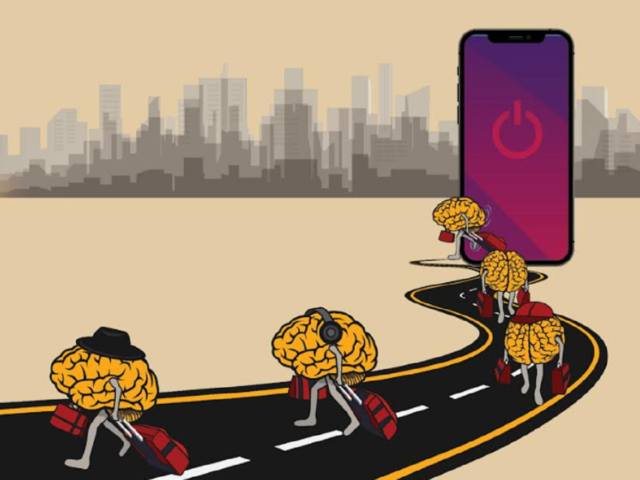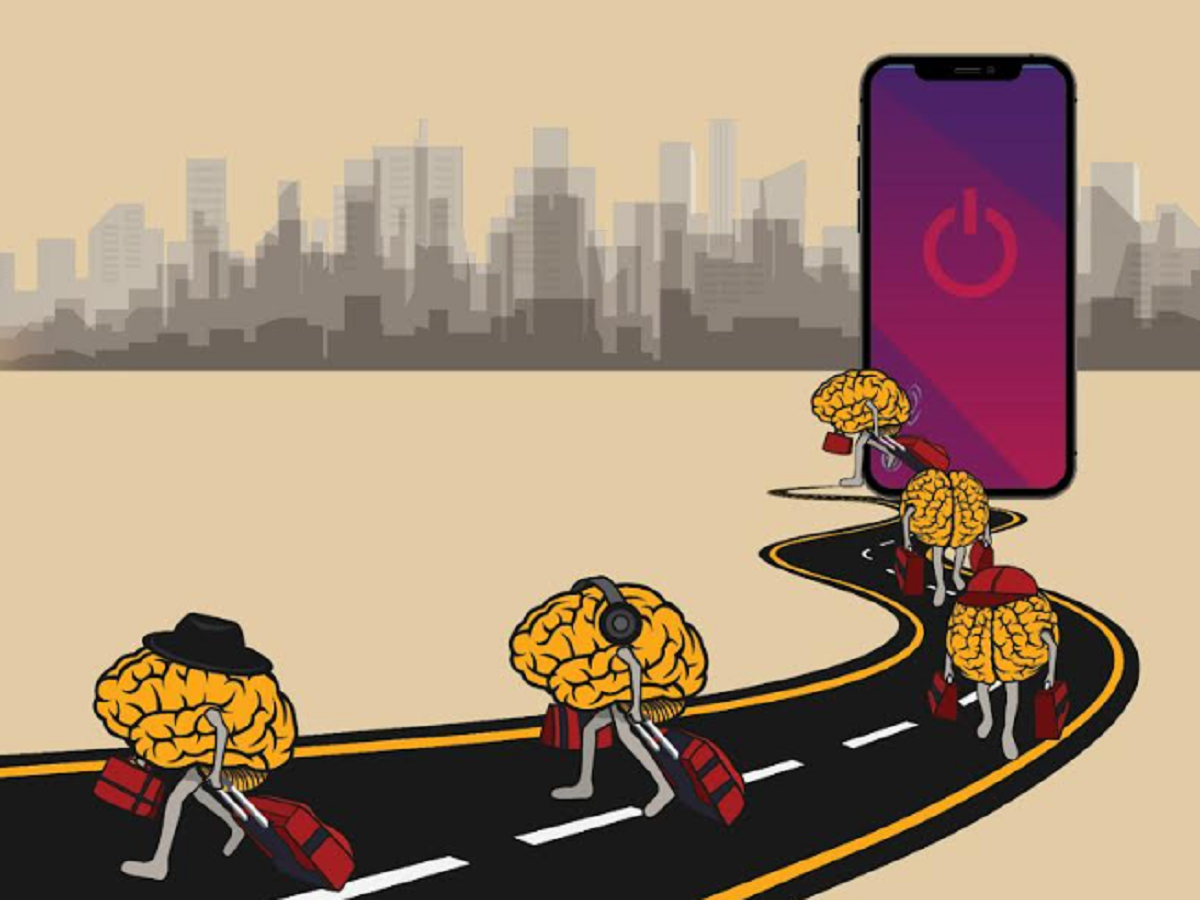
Sharma is a professor of clinical psychology at NIMHANS (National Institute of Mental Health and Neurosciences) in Bengaluru. He is also a coordinator at the institute’s clinic SHUT, which expands to Service for Healthy Use of Technology. His clients, many in the 25-35 years age group, often ask him to suggest some “dopamine detox” retreats. His answer is not what they expect.
In recent years, many internet users have embraced the term “dopamine detox” to signify a break from social media and digital devices. A cultural import from the West, the term has gained significant traction in India, reaching peak search interest on Google Trends in the last week of February 2023. As the concept gains popularity, mental health professionals like Sharma are busy debunking myths associated with it.
Their work starts with clarifying how dopamine works. Dopamine is a neurotransmitter, a brain chemical that helps us feel pleasure and motivation, among other things. “Before the internet era, dopamine was primarily stimulated through daily rituals like work-related activities, sports and family interactions,” says Sharma.
The internet transformed the way we get our dopamine fix by bombarding us with constant notifications that cater to our need for validation. Additionally, streaming platforms awakened our binge-watching tendencies, adding to the many digital stimuli that give us a dopamine rush at a faster and more frequent pace. “All of this conditions the brain to expect stimulation at a certain speed, so it tends to go back to the screen to look for that stimulation. And if you don’t get the same level of stimulation, you start feeling demotivated and irritable,” says Sharma.
When this pattern gets overwhelming—the internet is loaded with data on social media’s negative impact on mental health—people often tend to look for a clean break from their devices. Hence, the dopamine detox. Sharma says the term is a misnomer because our body has a natural way of generating dopamine, with or without digital detox. At best, digital detox pushes the body to seek other stimuli. “So fasting, in this case, only exists at a cognitive level,” he says. In most cases, people try to curb the impulse for instant gratification by impulsively looking for ways to create instant deprivation (read: retreats into the wild). “It will take 3-6 months to a year of conscious technology use and shift toward offline, stimulating activities for our digital habits to change effectively,” adds Sharma. Shreya Punj would know. She has just returned from a six-month social media sabbatical and doesn’t think she has got it all sorted. “My therapist told me I was burnt out and should take a break from the internet (and work in general) if I can,” says the 31-year-old publishing content creator from Delhi.
During her break, she was happy to give her hyper-competitiveness a rest, but it wasn’t permanent. “Earlier, when I would see somebody on the internet doing better than me, I would feel a spike of negative emotion,” she says. Punj recalls how it would affect her body: “I would frown, jaws locked, and the heart would beat fast. I would clutch my phone harder for no reason, and just stare at it.” When she was no longer part of the “rat race”, she could consume the same updates from self-assigned internet rivals as “content”, as if she were watching a movie.
However, “unplugging [for a few days] doesn’t rewire your mind. But it might help you recognise the triggers you are leaning on,” says Anna Lembke, a psychiatry professor at the Stanford University School of Medicine and author of Dopamine Nation, in a June 2023 article on Time.com. Something similar happened with Punj.
“It’s not like I don’t feel a sudden spike of jealousy while scrolling my social media feed anymore. But I feel better equipped to handle it,” she says. “I put the phone aside, sit straight, unclench my jaws and rotate my neck a little. I ask myself why it was so upsetting.” Punj says the screen sabbatical has taught her that when it comes to social media triggers, there is no point in finding distractions. The only way to improve is to acknowledge the feeling and then focus on doing something healthy, preferably offline, instead of fixating on the said feeling.
During her break, she occasionally checked funny reels and memes on Twitter and Instagram without actively engaging or posting any herself. “A total internet cutoff is not sustainable,” she says. “You start missing the joys of the internet. Then you are busy sustaining the detox instead of reconnecting with yourself.”
Meghnad S, another content creator, is also taking the longer route to dopamine nirvana, but from the supply side. Going against conventional wisdom, instead of sharing multiple short videos thrice a week, he uploads one long, well-researched video on politics, society and the internet, in a fortnight. “It even has a threeminute mental health break in the middle where you just watch me putter around, make coffee, tweak my set-up and play with my dog,” says the YouTuber who has got 24,000-plus subscribers to his channel, Meghnerd, in the past three months or so. “I’m consciously trying not to give you instant dopamine hits,” he says, admitting that it is harder to do, given that he himself battles with regulating his dopamine stimuli from social media apps all the time. That said, Meghnad also realises he is fighting against the tech giants that have mastered the art of keeping people hooked to their devices.
Gauri Bansal, a product manager who has worked with a major social media platform in the past, points out how features like the “endless scroll”, inspired by the gambling slot machine, are designed to create an endless loop of surprise and delight.
Bansal says the content recommendation engine of social media apps has evolved to influence preferences without explicitly stating it. “There used to be a feature on Instagram that signalled the end of your scroll for the day, prompting a refresh,” she recalls. Now feeds are subtly populated with recommended content based on your and your social circle’s activity and preferences online. Initially, this fresh batch of content would have a superscript mentioning that others in your circle engaged with it. Not anymore.
TECH SOLUTIONS
Thankfully, technology has also provided some features to check excessive digital stimuli, like screen-time trackers, account deactivation for a brief period and settings that allow you to mute notifications. “Also, going on the web mode rather than the app on mobile helps some people a lot because there’s a lot of inbuilt friction in the web experience,” says Bansal. “But not many in the mobile-first markets like India are aware that you can switch to the web version of social media apps on your mobile phone itself,” she adds.
NIMHANS’ Sharma says he would choose these moderation measures—that help recalibrate dopamine stimuli—over the dopamine detox retreats his clients demand which can do precious little in changing their addictive digital habits in the long term.





































